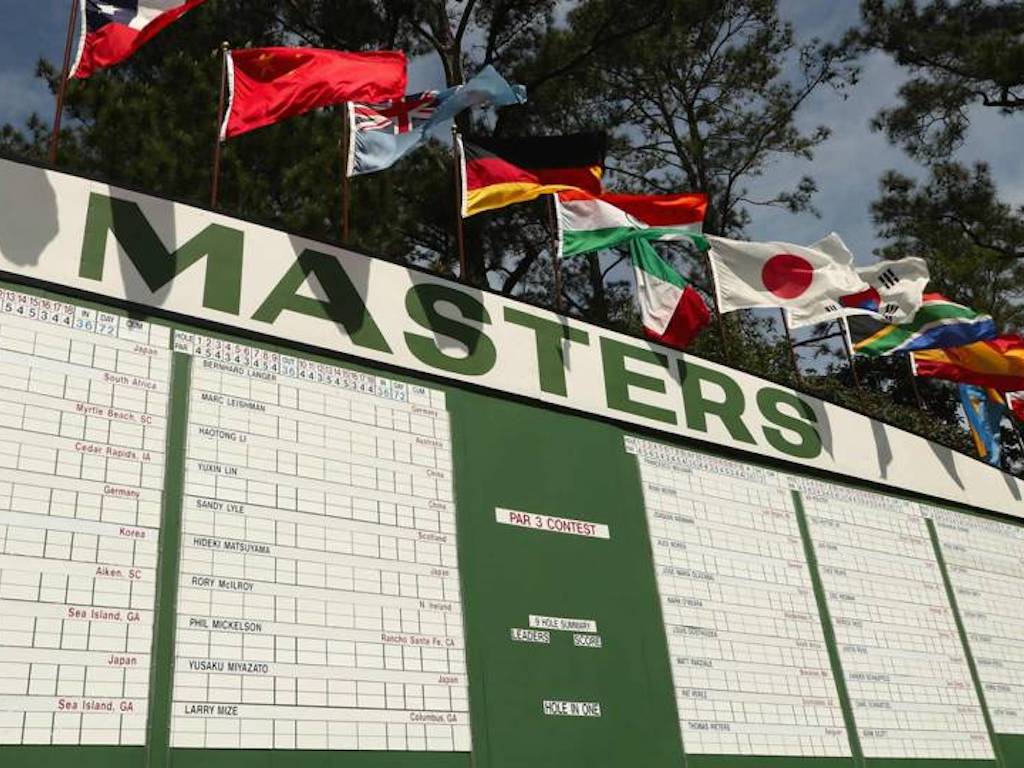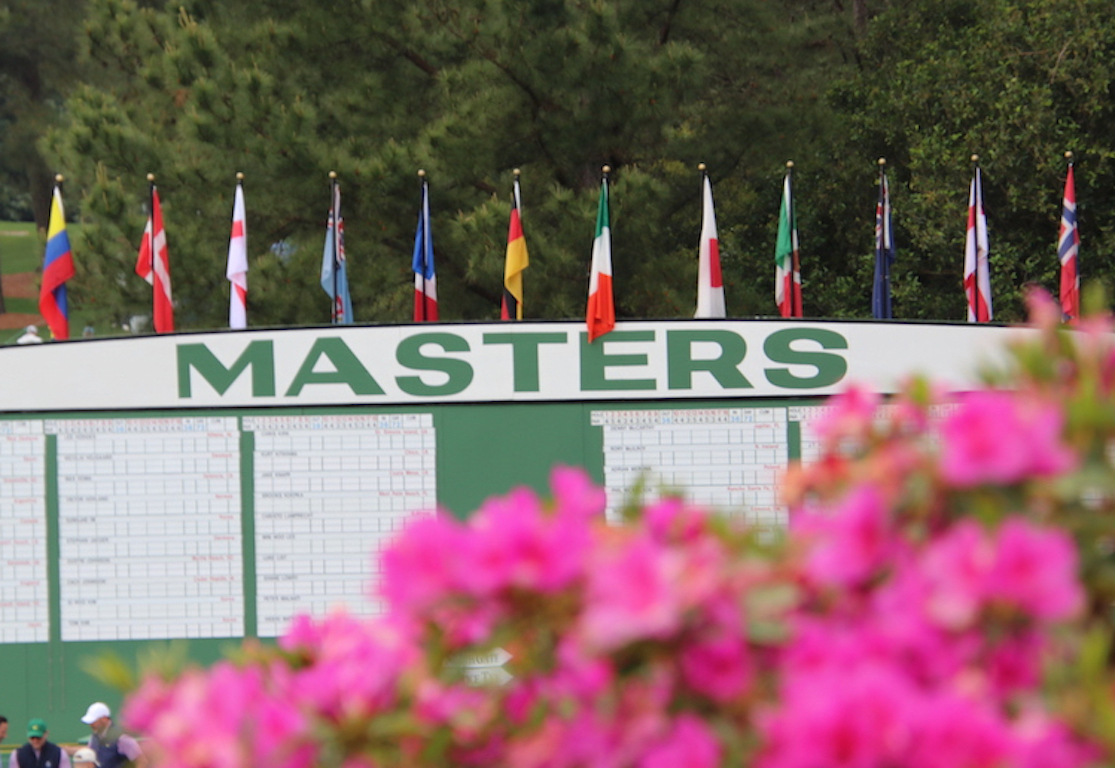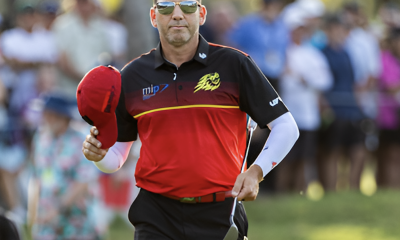News
Morning 9: Distance Insights Report Edition: What you need to know, key responses & reading between the lines

|
|
|
By Ben Alberstadt
February 5, 2020
Good Wednesday morning, golf fans.
Welcome to the Distance Insights Report Edition of the M9. By now, you know well the USGA and R&A yesterday released the long-awaited joint study. What does it say? Well, let’s have a look at the headlines…Golf Digest: “USGA/R&A declares distance increases must stop in findings from Distance Insights Project”…Forbes: Cycle Of Distance Increases Is ‘Undesirable And Detrimental To Golf’s Long-Term Future,’ Project Finds…SkySports: R&A and USGA to address ‘detrimental’ increases in distance…
|
|
1. Distance Insights Report
I’m going to present half of our Gianni Magliocco’s item on the report, because, well, I can.
“On Tuesday, golf’s governing bodies released the “Distance Insights Report” in which the two ruling authorities found the “continuing cycle” of the “100-year trend of hitting distance increases in golf” is “detrimental to the game’s long-term future.”
“The Distance Insights Report is a 102-page document, which includes data and information from 56 different projects that was co-released by the USGA and R&A and which hints at potential significant changes in the equipment rules over the coming years following a “broad review of both clubs and balls.”
“In a key findings statement released by the USGA and R&A, the organization revealed that “after extensive stakeholder research, the report features more than 100 years of data, informed by a library of 56 supporting documents.”
“Here were the key findings of the report per the USGA and R&A”
“The USGA and R&A have also stated that with these findings “a broad review of both clubs and balls will be conducted to understand and assess a full range of options for addressing these issues relating to hitting distance.”
2. Pondering bifurcation?
ESPN’s Bob Harig…”For the first time, golf’s governing bodies will study the possibility of letting golfers play by different rules as they relate to equipment in order to potentially reduce hitting distances.”
3. What’s next… (and shots fired?)
Golfweek’s Eamon Lynch…”The next steps that are broadly outlined in the report are in keeping with golf’s fondness for deliberate, ruminative processes, and at odds with the modern thirst for flip-switch change. There’ll be a year or so of more research with invitations for input extended to stakeholders, not least equipment manufacturers. Hence this effort at reassuring that hostile constituency: “It is not currently intended to consider revising the overall specifications in a way that would produce substantial reductions in hitting distances at all levels of the game.””
“The distance report is awash with the noble language of consensus building, but make no mistake – the USGA and R&A have fired the first shot in a war for the future of golf. It is both overdue and necessary.”
4. Shackelford’s take
We have to check in with arguably the most persistent USGA watcher (and oftentimes critic)…
|
|
5. LPGA’s response
Golfweek’s Todd Kelly…”The LPGA responded to Tuesday’s release by the USGA and R&A of the Distance Insights Project report.”
6. PGA Tour reaction
Per Golf Channel…”PGA Tour: “Since 2003, we have been working closely with the USGA and the R&A to closely monitor distance, and this latest report is an expanded and thorough review of the topic, and others, which are all important to the game. The R&A and the USGA are our partners, and the PGA Tour will continue to collaborate with them, along with all of our other industry partners, on the next steps in this process. We believe the game is best served when all are working in a unified way, and we intend to continue to approach this issue in that manner. The PGA Tour is committed to ensuring any future solutions identified benefit the game as a whole without negatively impacting the Tour, its players or our fans’ enjoyment of our sport.”
7. Mell: OEMs “on notice”
Interesting points from Golf Channel’s Randall Mell…”If you’re Titleist, Callaway, TaylorMade or another equipment manufacturer, the USGA and R&A’s release of their Distance Insights Project today triggers a warning system.”
8. Chamblee’s solutions
Adam Woodard at Golfweek quoting Chamblee’s Golf Channel remarks…”Brandel Chamblee has a few ideas on possible solutions, and he shared them during Golf Channel’s two-hour special edition of Golf Central Tuesday evening.”
9. Breaking down what the PGL proposes
“The format…The tour would be composed of 48 players competing in 18 tournaments from January through September, with 10 events staged in the United States and the other eight around the world. The events would be 54 holes with no cut and shotgun starts over the first two days to better showcase all the players during a television window.”
|
- LIKE1
- LEGIT4
- WOW0
- LOL0
- IDHT0
- FLOP1
- OB0
- SHANK3
News
Masters 2024: Reduced-scale clubhouse trophy and green jacket to Scottie Scheffler

In the world of golf, there is Scotty and there is Scottie. Scotty Cameron gave the world of golf a nickname for a prestigious putter line, and Scottie Scheffler has now given the golf world a blueprint for how to negotiate one of the toughest tournaments to win. Sunday, Scheffler won the Masters tournament for the second time in three years. He separated from the field around the turn, making a trio of birdies at holes eight through 10. On the long walk home, he added three more birdie at 13, 14, and 16, to secure a four-shot win over Masters and major-championship rookie Ludvig Åberg.
On No. 7, Ludvig Åberg makes birdie to move into a tie for second place. #themasters pic.twitter.com/ZSjcOr9OQK
— The Masters (@TheMasters) April 14, 2024
As the final group moved along the ninth hole, a quadrilateral stood at 7 under par, tied for the lead. Scheffler, playing partner Collin Morikawa, and penultimate pairing Max Homa and Åberg advanced equally toward Amen Corner, with the resolution of the competition well in doubt. Morikawa flinched first, getting too greedy (his words) at nine and 11. Double bogey at each dropped him farther back than he wished, and he ultimately made a 10-foot putt for bogey at the last, to tie for third position.
Ludvig Åberg made the next mistake. Whether he knew the Ben Hogan story about the approach into 11 or not, he bit off way more than he should have. His approach was never hopeful, and ended short and right in White Dogwood’s pond. Åberg finished the hole in six shots. To his credit, he played the remaining seven holes in two-under figures. Finally, Max Homa was the victim of the finicky winds over Golden Bell, the short, par-3 12th hole. His disbelief was evident, as his tee shot flew everything and landed in azaleas behind the putting surface. After two pitch shots and two putts, Homa also had a double bogey, losing shots that he could not surrender.
Why? At the ninth hole, Scottie Scheffler hit one of the finest approach shots of all time, into the final green of the first nine. Scheffler had six inches for birdie and he converted. At the 10th, he lasered another approach shot into a tricky hole location, then made another fine putt for birdie. Within the space of 30 minutes, Scheffler had seized complete control of the tournament, but Amen Corner still lurked.
Scottie Scheffler is back in sole possession of the lead. #themasters pic.twitter.com/MGytXpJcXH
— The Masters (@TheMasters) April 14, 2024
At the 11th, Scheffler played safely right with his approach. His chip shot was a wee bit too brave and left him a seven-foot comeback putt for par. He missed on the right side and gave one shot back to the course and field. His tee ball on 12 was safely aboard, and he took two putts for par. On 13, the 2022 champion drove slightly through the fairway, then reached the green, with his first two shots. His seventy-foot-plus putt for eagle eased up, four feet past the hole. His second putt went down, and he was back in the birdie zone. As on nine, his approach to 14 green finished brilliantly within six inches. His final birdie came at the 16th, where he negotiated a nine-foot putt for a deuce.
Leader by four with two to play. #themasters pic.twitter.com/KcoilYExDr
— The Masters (@TheMasters) April 14, 2024
Scheffler reached 11 under par and stood four shots clear of Ludvig Åberg when he reached the 18th tee. His drive found the lower fairway bunker on the left, and his approach settled in a vale, short and right of the green. With dexterous hands, Scheffler pitched to three feet and made the putt for par. With a big smile, he embraced caddie Ted Scott, who won for the fourth time at Augusta National, and the second with Scheffler. Ludvig Åberg finished alone in second spot, four back of the winner. Not a bad performance for the first-time major championship participant Åberg, and not a bad finish for the world No. 1 and second-time Masters champion, Scottie Scheffler.
- LIKE2
- LEGIT0
- WOW0
- LOL2
- IDHT0
- FLOP0
- OB0
- SHANK3
News
5 Things We Learned: Saturday at the Masters

Just as the honorary starters broke our hearts with the reality of ageing, so too, did Saturday, with the revelation that third-round Tiger Woods is not yet (if ever) what he once was. The great champion struggled mightily to an 82, tied with three others for high round of the day. Among the top ten, the worst score posted was DeChambeau’s 75, but the large Californian remains in the hunt. Day four will see 2022 champion Scottie Scheffler pair with Collin Morikawa in the final game. In front of them will be Max Homa and Ludwig Åberg. The antipenultimate pairing will feature DeChambeau and Xander Schauffele.
If you look at the one-off major winners, most took advantage of their only chance at grand slam glory. For golfers like Homa, Schauffele, and others, Sunday the 14th might represent their best and only chance at claiming a major title. For Scheffler, Morikawa, and DeChambeau, the ability to join the two-time and three-time, major winners club holds great appeal. Finally, a young’un like Åberg seeks to jump-start a more-than-tour-winner career with a major title. Many of the greats won them early, and the Swede from Texas Tech would love nothing more than a chance to join that company.
Sunday at Augusta, as always, will be riveting. It will provide hope throughout the first nine holes, then gut many a competitor’s heart coming home, rewarding just one with a new item for the wardrobe. Plan your menu and choose your outfit. Masters 2024 is about to conclude. Until then, let’s reveal five things that we learned on day three of the year’s first men’s major.
1. The three most critical holes on the first nine are …
numbers four through six. You might make some birdies at the first and last trios of holes, but the middle triumvirate of fairways and greens determines your day. Play them even par or better, and you’ll lose zero shots to the field. Get on a downward spiral of slightly-wayward shots, and recovery will be nigh impossible. Anyone who makes three at the fifth, as Tiger Woods did on Saturday, will get giddy.
Tiger Woods makes a lengthy birdie putt on No. 5. #themasters pic.twitter.com/bm3zw6cllK
— The Masters (@TheMasters) April 13, 2024
2. The three most important holes on the second nine are …
ten through twelve. We realize that we commit heresy by omitting one of Herbert Warren Wind’s Amen Corner traces, but par or better is critical at 10. Dry landings at 11 and 12 set the competitor up for two par fives in three holes, sandwiched around a straightforward, par-four hole. Remember when Ben Crenshaw began his march to glory in 1995? It all started with birdie at the 10th.
A three on No. 10 ties Bryson DeChambeau for second place. #themasters pic.twitter.com/EPHQARauPl
— The Masters (@TheMasters) April 13, 2024
3. The most interesting and efficient round of day three came from …
Collin Morikawa. Birdies at the first three holes, followed by bogey-birdie at six and eight, then ten consecutive pars to finish off the second-low round of the day. Morikawa has improved each day, from 71 to 70 to 69. He has won majors in England and California. He has the temperment for this sort of day, but will certainly be in the hottest of all cauldrons around 3 pm on Sunday.
Three straight birdies to open Collin Morikawa’s third round. He’s one stroke off the lead. #themasters pic.twitter.com/nzA9kSJD11
— The Masters (@TheMasters) April 13, 2024
4. The guy who lost the most ground on day three was …
Nikolai Hojgaard. The dude failed to make par from the seventh green to the 16th. After three consecutive birdies around the turn (8 through 10), the Great Dane tumbled to earth with five consecutive bogeys. 11 and 12, we understand, but 13 and 15 are par-five holes, for goodness sake! No matter where he finds himself on day four’s back nine, it will be hard to put that stretch of golf out of his mind.
Nicolai Højgaard birdies Nos. 8 and 9 to leap into a tie for second place. #themasters pic.twitter.com/Wkoh39dEKE
— The Masters (@TheMasters) April 13, 2024
5. Our pick for the green jacket is …
impossible to nail. We suspect that certain players should and could perform on Sunday. We remember when Retief Goosen, a great US Open winner until round four of 2005, lost his mojo. We recall days when Rich Beam and Y.E. Yang pulled major titles away from Tiger Woods. Things go wrong on Sunday, and they go wrong super-quick at Augusta.
We’ve decided to ascend Mount Olympus for our Sunday selection. Who better than the 2021 Olympic champion to add a long-awaited, first major title. It’s Professor X for us: Xander Schauffele.
Eagle for Scheffler. He returns to a tie for the lead. #themasters pic.twitter.com/3mWXrXVTL6
— The Masters (@TheMasters) April 13, 2024
- LIKE5
- LEGIT0
- WOW0
- LOL3
- IDHT0
- FLOP1
- OB0
- SHANK5
News
5 Things We Learned: Friday at the Masters

You don’t see leaves on the ground at Augusta National. The grounds crew and superintendent’s staff take care of those sorts of things, so that both course appearance and consistency of play are preserved at the top tier. We saw leaves on the ground today and, given the force and perseverance of the wind, we’re lucky that we didn’t see tree trunks along the fairways. We did see higher scores than secured in round one, and some of the three- and four-hole stretches were downright inconceivable. The cut after 36 holes came at six over par, and five dozen golfers reached the weekend of play. Numbers always define the story of a tournament, and we’ll let them define the five things we learned on day two of the 2024 Masters tournament.
One: 60 + 10
Sixty golfers posted scores of 148 or better through 36 holes, to reach weekend play. Ten more golfers posted 149 and missed the cut by a single stroke. The ones who missed the cut by a stroke included former champions Mike Weir, Zach Johnson, and Sergio Garcia. Also among the brood were current US Open champion Wyndham Clark, and Nick Dunlap, who won on the PGA Tour as an amateur in January, and subsequently turned professional. Of the ones who survived by the slimmest of margins, surviving to the weekend were former champions Jose Maria Olazabal, Hideki Matsuyama, and Adam Scott, along with Rickie Fowler and Tom Kim. Golf’s cut is a cruel and unconcerned blade, and each Masters tournament reminds us of this fact.
Tom Kim makes just the third birdie of the day on hole No. 4. #themasters pic.twitter.com/gtlLbVcQi6
— The Masters (@TheMasters) April 11, 2024
Two: One
The number of amateurs to make the cut in the 2024 Masters is solitary. His name is Neil Shipley, and most folks love him. He wears his hair to the shoulder, and appears to have the proper balance of intensity and chill. Shipley opened with 71, then held on for 76 on day two. He made the cut by three shots, and will collect his share of hardware on Sunday. It’s safe to say that Shipley will turn his attention to learning the course, as well as his own self under pressure.
Following a birdie on No. 13, Neal Shipley is the lowest amateur on the course. #themasters pic.twitter.com/3MAjI3yltE
— The Masters (@TheMasters) April 11, 2024
Three: 23
For most sorts fans, 23 recalls the greatest NBA player of all time, Michael Jordan. For Justin Thomas, it’s a number that will haunt him for a long time. Thomas reached tee number fifteen on Friday at even par. The two-time PGA Champion played the subsequent, four-hole stretch in 23 shots, missing the cut by a shot. On fifteen, he went for the green in two, in some sort of halfhearted manner. He got wet with shot number two, went long with his pitch, and three-putted from the fringe. On sixteen, he played away from safety and found elevated sand. His blast went down the hill, and he missed his approach putt in the wrong place. On seventeen, he missed his drive right and his approach long, and lost another shot to par. The coup de grace took place on the home hole: drive so horribly left that he had to pitch out to the fairway and hit three metal into the green. His third double bogey in four holes dropped him all the way to 151 and plus seven. Among the many questions, the foremost one was why he dropped his longtime caddy on the eve of a major championship. Surely Bones would have saved him one of those shots, and perhaps more.
Justin Thomas | 15th Hole, Round 2, Stroke 2 https://t.co/TYudRsbM8g
— ?????BuffaloGolfer.Com????? (@buffalogolfer) April 13, 2024
Four: Forty-Nine divided by five or six
Tiger Woods cannot possibly win title number six at Augusta in his 49th year, can he? Not on this broken body, and not from seven strokes behind, right? Not with so few competitive rounds over the most recent months, and not one year removed from a third-round withdrawal from this very tournament. Well, if he cannnot possibly win, allow us to dream and hope a bit, and hold on to a fantasy.
Tiger Woods gets back to one over par with chip-in birdie on No. 6. #themasters pic.twitter.com/h4G5CrbgdJ
— The Masters (@TheMasters) April 12, 2024
Five: 3 that we like
We like Scottie Scheffler, of course. He seems to have a sense of Augusta National, and he was able to hold on in 2023 for the championship. We like Nikolai Hojgaard, because he might have just the proper combination of naivete and experience for a first-time winner. Finally, we like Collin Morikawa, a winner of two separate major titles. Winning at Augusta National requires a certain amount of length, unless you putt lights out. Morikawa might be embedded in one of those putting weeks.
Nicolai Højgaard chips in on No. 7 to move to red numbers. #themasters pic.twitter.com/CTE34kuOdh
— The Masters (@TheMasters) April 11, 2024
- LIKE0
- LEGIT0
- WOW0
- LOL1
- IDHT0
- FLOP0
- OB0
- SHANK0
-

 19th Hole6 days ago
19th Hole6 days agoDave Portnoy places monstrous outright bet for the 2024 Masters
-

 19th Hole2 weeks ago
19th Hole2 weeks agoThings got heated at the Houston Open between Tony Finau and Alejandro Tosti. Here’s why
-

 19th Hole7 days ago
19th Hole7 days agoTiger Woods arrives at 2024 Masters equipped with a putter that may surprise you
-

 19th Hole2 weeks ago
19th Hole2 weeks agoReport: Tiger Woods has ‘eliminated sex’ in preparation for the 2024 Masters
-

 19th Hole1 day ago
19th Hole1 day agoTwo star names reportedly blanked Jon Rahm all week at the Masters
-

 19th Hole2 weeks ago
19th Hole2 weeks agoAddiction, spinal fusion, and scam artists – Everything Anthony Kim revealed in candid interview with David Feherty
-

 19th Hole2 weeks ago
19th Hole2 weeks agoAnthony Kim says doctors told him that he ‘may not have much time left’ ahead of LIV return
-

 19th Hole1 week ago
19th Hole1 week agoBrooks Koepka and Sergio Garcia make significant equipment changes as 2024 Masters looms



















dj
Feb 5, 2020 at 4:41 pm
Quote”8. Chamblee’s solutions
Adam Woodard at Golfweek quoting Chamblee’s Golf Channel remarks…”Brandel Chamblee has a few ideas on possible solutions, and he shared them during Golf Channel’s two-hour special edition of Golf Central Tuesday evening.”
“As I read (the report), I found myself agreeing with some of the issues from a sustainability standpoint as the game continues to grow,” said Chamblee. “But I found myself differing in a lot of aspects of the report. Namely, I feel like the game is out of whack at the professional level in one way, and I think we do agree about this, the inability to play the game with great accuracy, what I would define as being outside the top 100 in driving accuracy and to be rewarded is out of whack.”
“The golf ball can easily be constricted by raising the fairway heights, growing the rough and firming up the greens,” he explained.”
This makes the most sense.